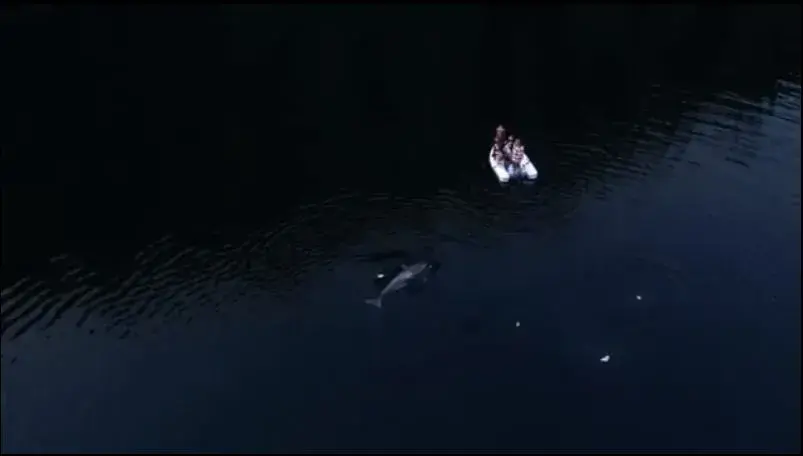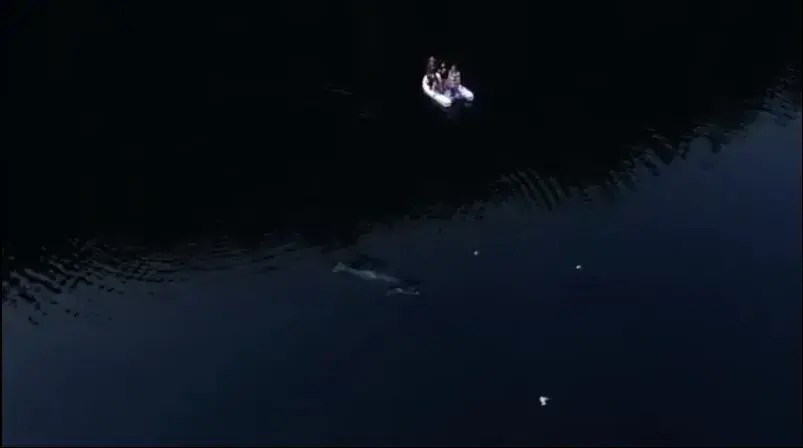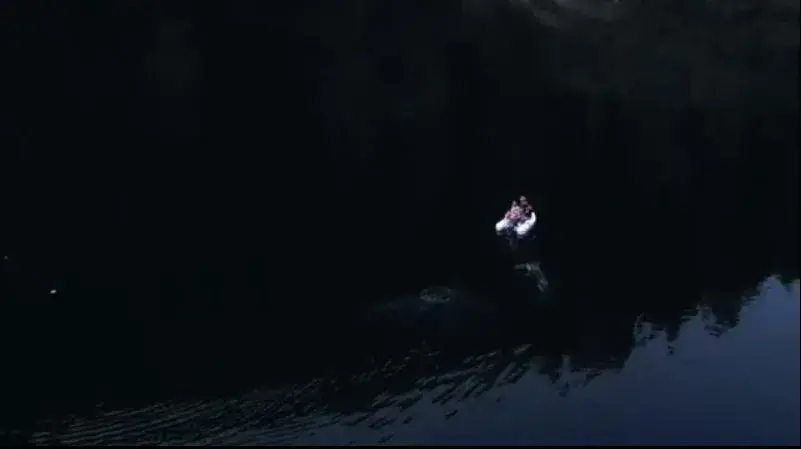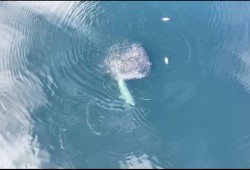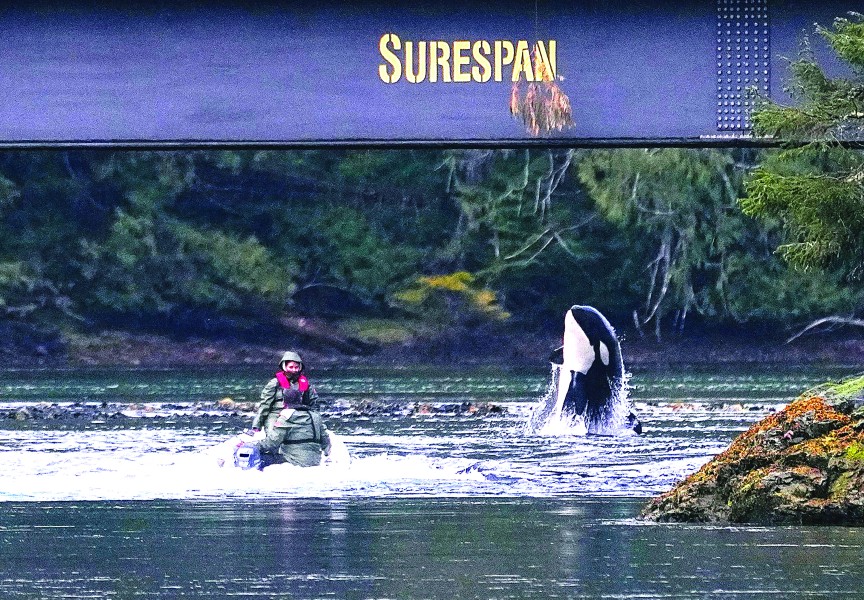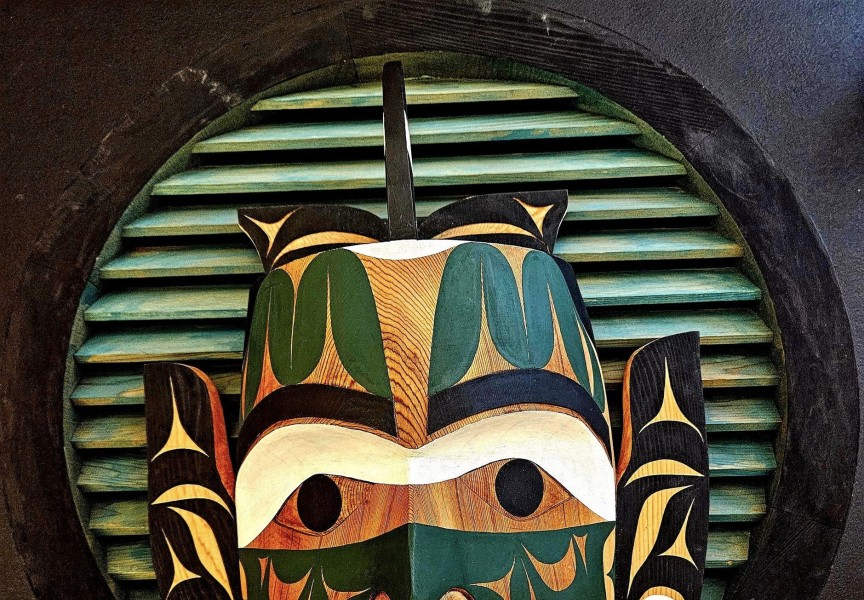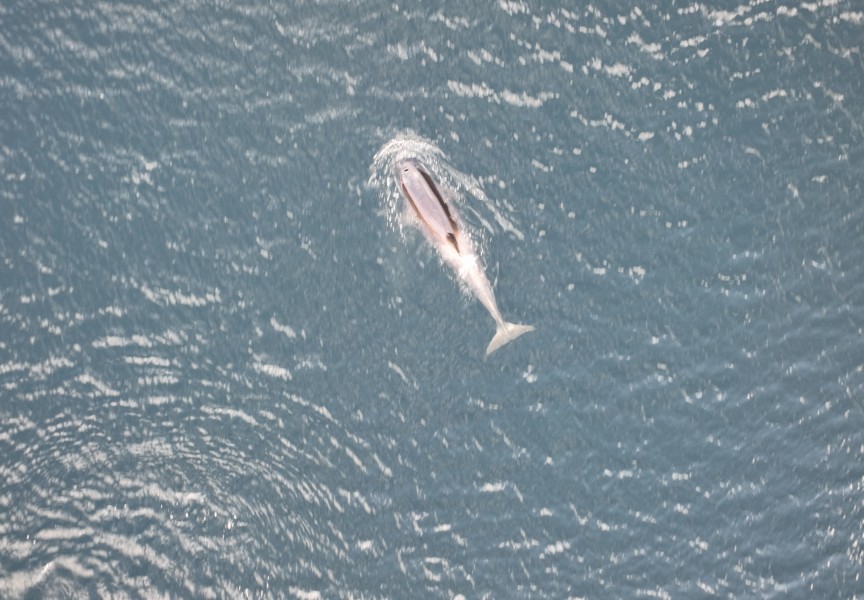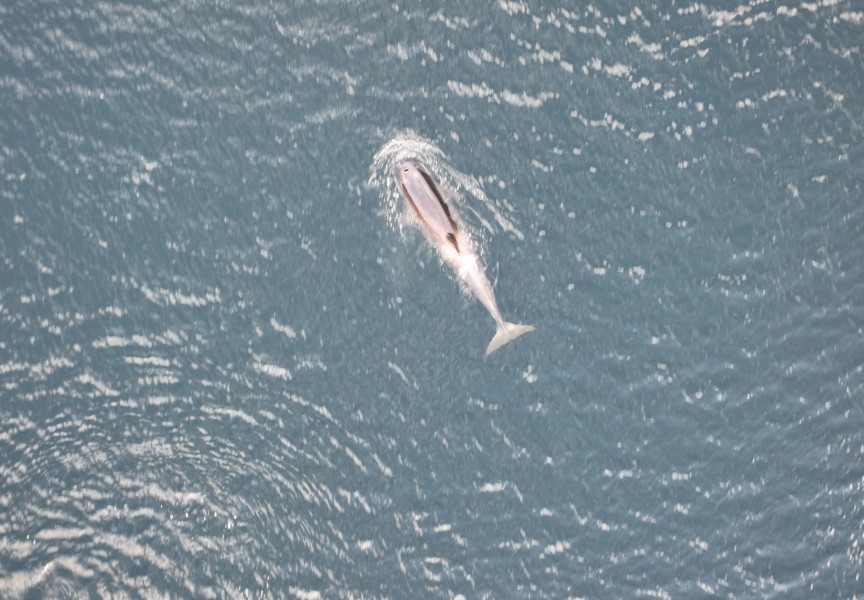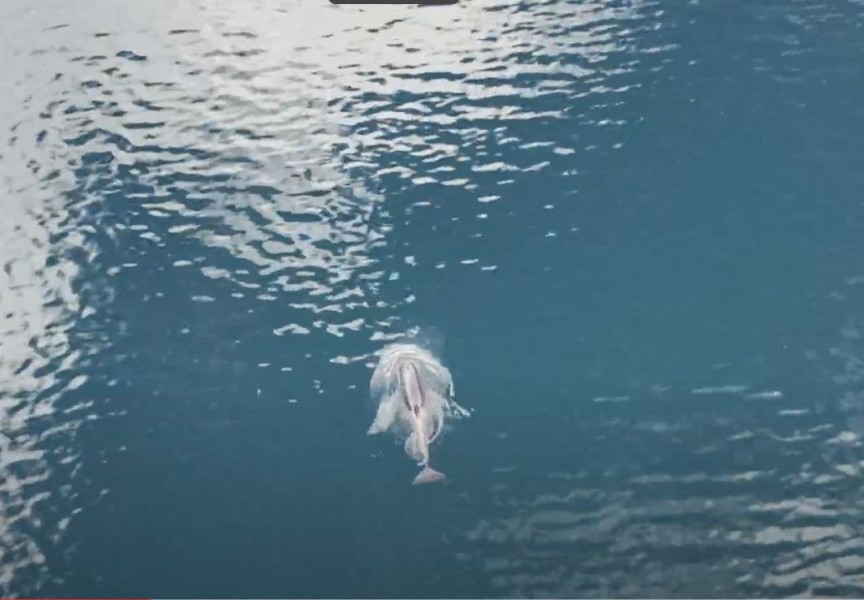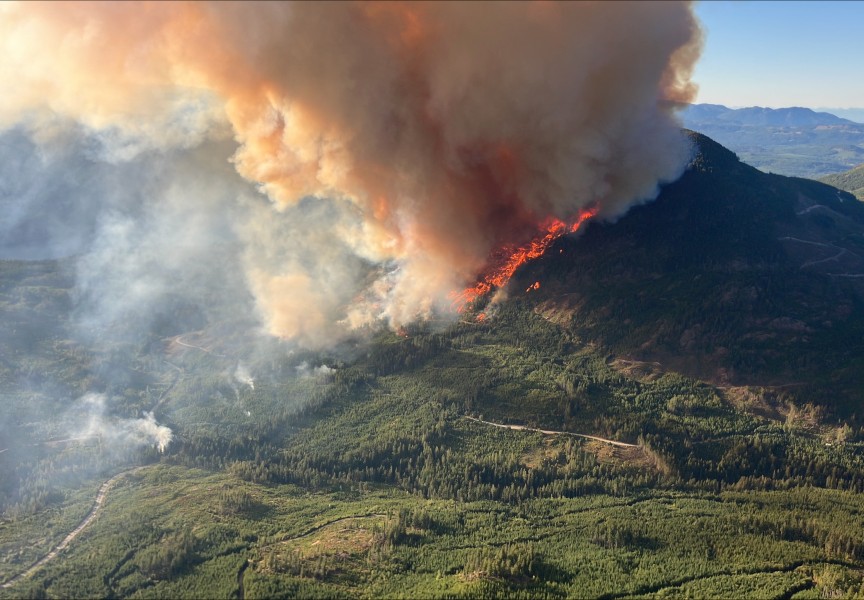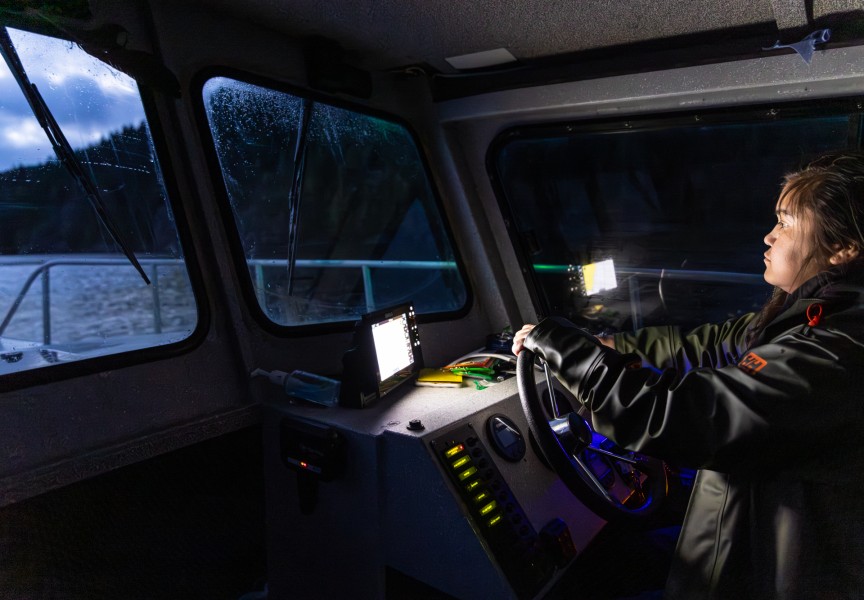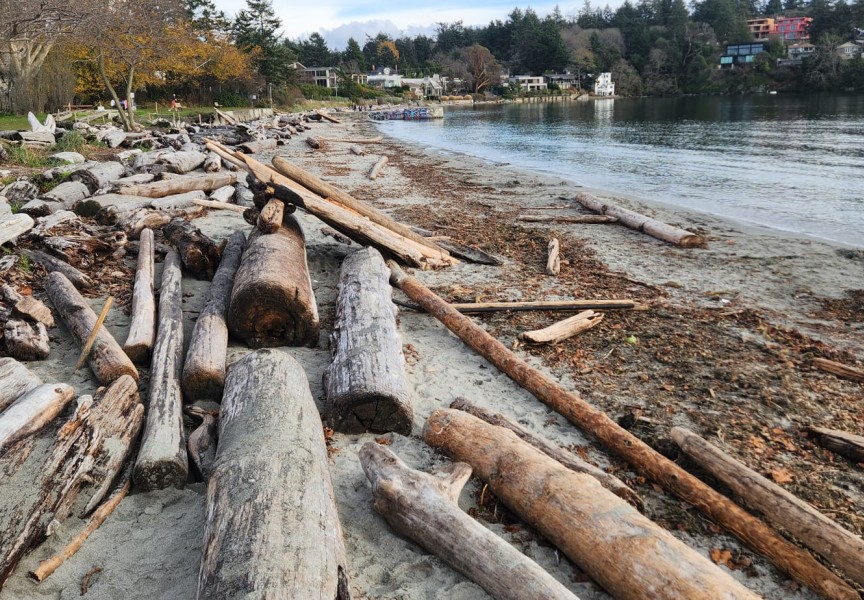After being stranded in a lagoon near Zeballos for a month, an orca calf is finally eating meat provided to her, giving a team more time to find a solution to a situation that appears to be getting more complicated by the day.
Named kʷiisaḥiʔis (kwee-sa-hay-is), meaning ‘Brave Little Hunter’ in Nuu-chah-nulth, the two-year-old killer whale ate seal meat provided to her on April 18. Donated to the cause by the neighbouring Nuchatlaht First Nation, over the following weekend kʷiisaḥiʔis continued to devour the slabs of meat thrown to her from a small vessel in a section of the Little Espinosa Inlet, just down the road from the Ehattesaht village of Ehatis.
After multiple quiet attempts, this was the first time the transient killer whale responded to feeding. She first entered the lagoon on March 23 with her mother, who died that morning while stuck on a sandbar. The mother was found with the remains of a seal, a common meal for transient killer whales, which feed on marine mammals. A necropsy revealed that the mother was nursing kʷiisaḥiʔis and pregnant with another female.
“We are pretty sure her mother was beginning to teach her how to hunt,” stated a briefing from Ehattesaht Chief and Council. “At first we were told that within two weeks there would be physical signs of starvation, but thankfully she looked healthy without any alarming changes in her appearance or what she did everyday. But by Wednesday [April 17] there were some early signs malnourishment was starting.”
The team monitoring the killer whale initially resisted feeding her out of concern that this would dissuade kʷiisaḥiʔis from learning how to hunt independently in the wild, but as the weeks went on concerns grew. Seeing her eat the seal meat brought tremendous relief to those watching the whale each day. Besides the Ehattesaht community the response team has encompassed Fisheries and Oceans Canada’s Marine Mammal Response Unit, experts from the Vancouver Aquarium and even specialists in transporting marine mammals from the Greater Vancouver Zoo.
Unlike resident killer whales that subsist on salmon, transient - or Bigg’s orcas – usually prey on seals, porpoises, dolphins and sometimes even other whales. kʷiisaḥiʔis has been seen eating ducks, and she recently surprised the response team when she dove into a cluster of bait fish to eat.
“[T]his shows there is some flexibility in the diet of younger orcas,” stated the chief and council. “While she didn’t eat much and she swam on after the second pass through before taking one of her regular long deep dives, this is another good sign that she is finding ways to sustain herself in the lagoon.”
The ultimate goal remains to return kʷiisaḥiʔis to the open ocean, where she can hopefully join a passing pod of relatives. Previous attempts to coax her through the narrow passage out of the lagoon during high tide has been unsuccessful, and kʷiisaḥiʔis evaded an operation to corral her into a sling for transport by truck.
The next plan was to use a purse seine, a large fishing net that forms an underwater pouch. This equipment and a vessel came to Zeballos for the operation, with help from the We Wai Kum, We Wai Kai and Homalco First Nations, but the capture and transport operation was held off when it was discovered that kʷiisaḥiʔis responds to feeding.
“This rescue operation is a rare occurrence and providing food to the whale has been evaluated and informed by discussions with marine mammal experts as part of the rescue operation,” stated an update from Fisheries and Oceans Canada. “This decision to pause relocation efforts was informed by the fact that the killer whale consumed provided seal meat, therefore the team is adapting to this information and changing operational plans accordingly to support a successful response.”
Currently the health of kʷiisaḥiʔis is being monitored daily by analysing drone footage, night vision goggles, surface and underwater recording, as well as thermal imaging. As planning continues to return the orca to the wild, a growing list of personnel has been called upon to lend their expertise, including equipment, vessel and landing barge operators, as well as commercial divers, drone pilots, cooks, safety personnel, traffic control and general helpers. While all this help is greatly appreciated, the Ehattesaht are admitting that an increasingly complex rescue operation is taking a financial toll.
“All this is a weight on our small community, and we know that with the responsibility we have for kʷiisaḥiʔis comes with a responsibility to care for our community and the people supporting us. To do that we must ask for outside assistance.”
The First Nation has set up a GoFundMe page to collect donations. As of April 23 over $38,000 has been raised, with donations ranging from $10 to $1,250. The Ehattesaht’s goal is $500,000.
“We have to keep everyone fed and housed and our community is small and isolated with limited options,” states the GoFundMe page, which can be found at https://www.gofundme.com/f/kiisaiis-brave-little-hunter-baby-orca

